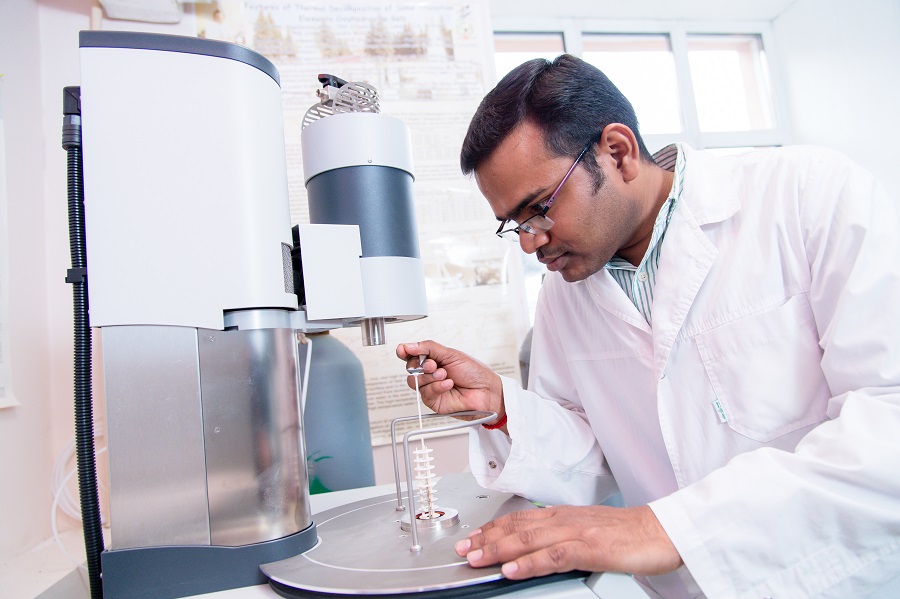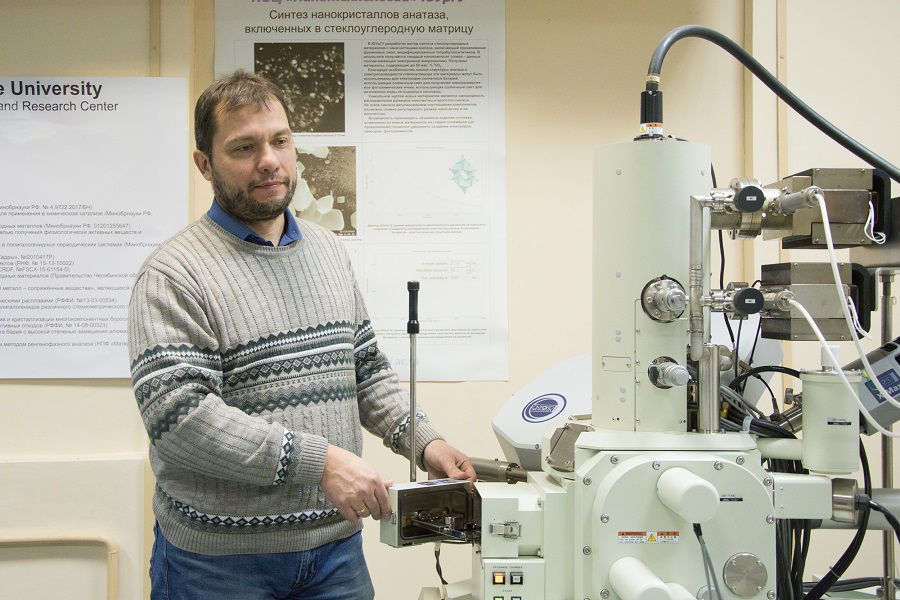Nowadays, South Ural State University has 8 international research laboratories functioning under supervision of leading foreign scientists from USA, Canada, Mexico, Great Britain, France, Slovakia and India.
There are researches in the sphere of such relevant spheres as additive manufacturing, food technology, digital industry, stress-caused diseases, etc. carried out in the laboratories. In 2019, SUSU is planning to open several more laboratories. We talked about the primary directions of research in one of them – the Laboratory of Polycyclic Aromatic Compounds and Carbon Nanomaterials – with Senior research fellow at the Department of Materials Science and Physical Chemistry of Materials, research engineer of Nanotechnology Research and Education Centre, Dmitry Zherebtsov.
– What are the directions in which research activity will be carried out in the new Laboratory?
– We had submitted the application for establishment of the SUSU Laboratory of Polycyclic Aromatic Compounds and Carbon Nanomaterials together with Konstantin Amsharov, a scientist from the University of Erlangen-Nuremberg (Germany). Activity of the Laboratory will be carried out in two directions: one of them is related with organic chemistry, and another one – with carbon nanomaterials. Carbon nanomaterials will be synthesized out of organic polycyclic aromatic compounds, which compose the major part of research at the Laboratory (they are organic compounds containing more than one benzene nucleus in their molecules). We’ve included carbon nanomaterials in the sphere of our expertise as they have a good potential for development of fundamental science and applied use.
– Which scientists are going to become research fellows at the Laboratory?
– The Laboratory will bring together research staff who have never worked together before. They are two highly-qualified specialists from India, two postgraduate students of the Faculty of Chemistry, who also are Candidate and Doctor of Sciences of the SUSU Faculties of Chemistry and Physics. Besides, six postgraduate students from the University of Erlangen-Nuremberg are going to take part in the research.

Photo: Ph.D. from India, Sakthi Dharan
– What practical use will the results of the Laboratory research have?
– Our Laboratory is mainly targeted at fundamental research and objectives; mostly, we are going to work on synthesis of new materials. Research directions connected with polycyclic aromatic compounds are potentially interesting for organic electronics. Organic electronics can be conditionally classified into 3 spheres: solar power engineering; semiconductors necessary, for example, for flexible organic transistors, diodes, or semiconductor devices (i.e. flexible organic electronics); the third direction has already found its practical use: they are organic light-emitting diodes used in production of computer or TV monitors. Our compounds will be potentially interesting for all these three spheres.
– Why is synthesis of carbon nanomaterials important for the global science? What are the properties they are going to possess?
– Among the most expected properties is high adsorption with regards to small molecules such as, for example, hydrogen molecules. Adsorption is the property of material to reversibly absorb and release molecules. This is a big unsolved problem for water transport, the eco-friendly automobiles which can run on water. So far, fueling of automobiles with liquid hydrogen is an unsolved problem. Using adsorbents, i.e. highly-porous materials which are capable to accumulate 5 to 10% of hydrogen in their pores (which is quite a lot) under comparatively low pressure might be the optimal solution. There is a continuous “scientific rush” going on with these sorbents.
Another important expected property of the new crystalline carbon materials will be their high electrical conductivity, which makes them applicable in the sphere of electrochemistry, for example, in storage batteries of smartphones or electric transport. Besides, electrically conductive chemically resistant carbon materials will be interesting for those working in the sphere of fuel elements, for example, the hydrogen ones which transform the energy of reaction between hydrogen with oxygen into electric energy. They will also become applicable in solar power engineering.

Photo: Research fellow at the Department of Materials Science and Physical Chemistry of Materials, research engineer of Nanotechnology Research and Education Centre, Dmitry Zherebtsov
– What is the uniqueness of the new Laboratory?
– Our laboratory’s distinctive feature is in the fact that we set the bar high in our research. One of the objectives is connected with carbon nanomaterials. There are hundreds of laboratories all over the world working on various carbon materials. We, in turn, have set a super-task to discover a new class of crystalline carbon materials. Such materials have been predicted by theorists in tens and hundreds of variants, however, no one have been able to obtain them yet. The path that we’ve chosen lies in a thermolysis of polycyclic aromatic compounds. In case we discover a new class of crystalline carbon materials, there will be another powerful boost in development of materials science and chemistry as a whole, just like it was after the discovery of fullerenes and nanotubes.




